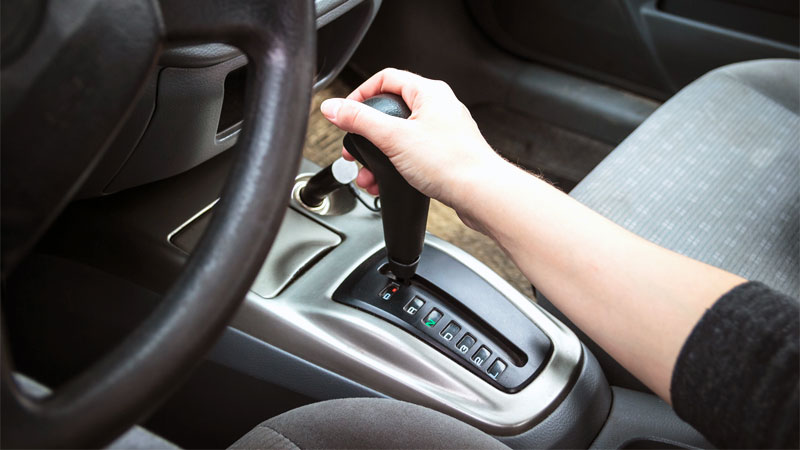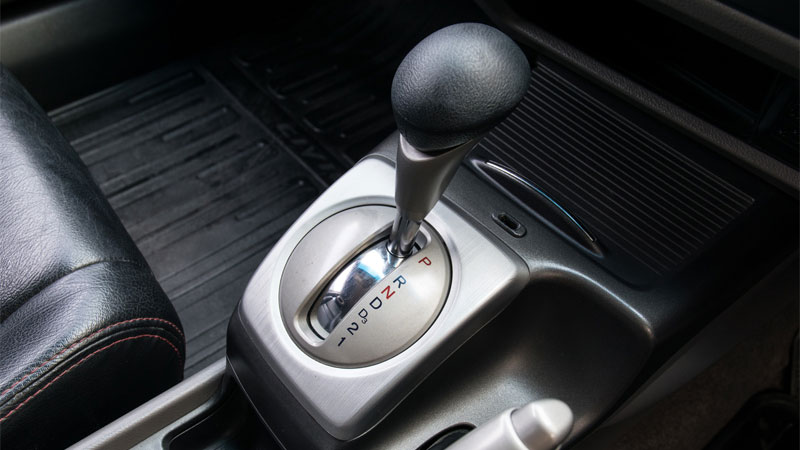With some notable exceptions, modern cars sold in North America almost always come with automatic gearboxes. People love these transmissions because they are much easier to use than a stick shift. Also, since you won’t focus on changing the gears, automatic cars are safer.
Are you wondering what the different automatic car gear shift letters and numbers mean? Not to worry, as I’ll go over the meaning of each letter and number, including P, R, N, D, L, 1, and 2.
But first, let’s go over how an automatic gearbox functions.
How Do Automatic Gearboxes Work?
The most common automatic transmission uses a hydraulic torque converter coupled with a planetary gearset via a clutch to change transmission ratios.
As soon as the engine reaches maximum torque, these transmissions usually change into a higher gear or choose a lower gear while decelerating. However, most automatic gearboxes today are electronically-controlled, allowing for finer control over gear changes.
Another popular type of automatic transmission is the dual-clutch. This type uses two electronically-controlled clutches, one for the odd and another for the even gears. As a result, the transmission can pre-select a gear, which leads to much quicker changes without loss of power. These transmissions work best on performance cars but have also been adopted on luxury cars.
Lastly, another type of automatic gearbox is the CVT. Commonly used on economy cars and hybrids, the CVT allows for infinite transmission ratios. Generally, CVTs use two pulleys connected with a steel belt, where the transmission adjusts the drive pulley’s ratio constantly, depending on the engine’s torque, load, and speed.
CVTs are quite unusual to drive because they continuously change the ratio while keeping the engine at a constant RPM. Thanks to this, CVTs are always in the right gear, even on a steep uphill, and are usually the most efficient. However, due to the pulley/belt mechanism, they are far less responsive and generally slower.
See Also:
What Do the Letters and Numbers on an Automatic Shifter Mean?
Automatic transmissions are very easy to use, but you still need to learn about the various letters and numbers on the shifter. I will start with the letters before treating the numbers.
What Do P, R, N, D, and L Mean On a Shift Lever?
The letters on the shift lever are self-explanatory. P is for “park”, meaning you should engage it when you park and shut down your vehicle. Putting the transmission in P will also stop it from creeping forward. Hence, many drivers engage their transmission in the “park” setting when waiting, such as when at a fast food drive through.
Meanwhile, R is for “reverse”, meaning you should use it when you want to go backward. Engaging the reverse gear will make the drive shaft spin backward. This will cause the drive wheels to start spinning in “reverse”. Keep in mind that it isn’t safe to start the vehicle when the shift lever is set on R.
N stands for “neutral”, and it means that the transmission is in free-spinning mode. Keeping the lever on this setting will completely disengage the transmission from the engine, allowing the drive wheels to move freely. The gear(s) will be released (forward and reverse), while the tires will be able to spin without restrictions.
Putting the automatic transmission in N mode isn’t something that most drivers do, unless in cases such as the following:
- The engine won’t start.
- The car needs to be pushed.
- The car needs to be towed.
D is for “drive”, which is a mode you should use when going forward 99% of the time. Specifically, the drive gear will give the wheels power during acceleration and steadily switch to higher ‘gears’ as the engine RPM (revolutions per minute) gets to the target degree. Decelerating will trigger the drive gear to downshift to lower gears.
The drive mode is utilized on highways or during long trips that involve driving at a fixed RPM. It is the top automatic transmission gear setting. There are automatic transmissions that have some numbers following the D (D1, D2, and D3) that apply to different driving situations. They are the forward gear operation’s manual gear settings.
Lastly, selecting the L option will put the transmission in low drive gear. This will make it easy for the vehicle to climb hills or maneuver while moving on bad roads. The L mode will help your tires get unstuck in muddy or snowy spots.
Other Letters On the Shift Lever
M may be used in place of L, and it will mean that the transmission has been put on a manual shift mode. You will be able to shift the transmission with the aid of paddle shifters (if so equipped), which can be found on steering wheels, or by a different operation (typically to the automatic gear lever’s right-hand side or left-hand side).
Some other modern gearbox types also have additional characters like OD, which means “overdrive”. I’ll go over how the OD option works after explaining the gear shift numbers.
What Do 1 and 2 Mean On a Gear Shift?
Some older vehicles have the numbers 1 or 2 on the gear lever. Engaging 1 on the shifter means the transmission will be locked only in first gear and a maximum speed, which is helpful when driving on steep inclines. Without this mode engaged, the transmission would change to a higher gear, and the vehicle might have a hard time ascending the hill, and it could even stall.
Meanwhile, engaging 2 means the transmission would only change between first and second gear, which is helpful for some less steep inclines.
However, modern transmissions use various sensors around the car to tell if you’re driving on an incline and will hold onto a gear. For that reason, cars produced this century don’t have 1 or 2 on the gear lever.
What Is Overdrive on a Car?
OD or “Overdrive”, isn’t typically displayed on the gearbox of newer car models, but many vehicles on the road still have it. It is controlled by the vehicle’s ECU (electronic control unit), and automatic engagement only takes place after the right conditions are met (e.g. speed).
The overdrive switch/button is usually located around or on the gear selector of older car models.
Overdrive is basically any gear that has a higher transmission ratio than 1, i.e., provides multiplication and not a reduction. For instance, if gear number 4 on your gearbox has a transmission ratio of 1, gears 5 and 6 will be in overdrive.
Thanks to these overdrive gears, the engine can work at low RPMs on the highway, which helps with fuel efficiency and lowers noise. The driver could engage “overdrive” on the shift lever on older automatic transmissions, meaning he/she would “let” the transmission shift into the highest gear. If not engaged, the system would only use the non-overdrive gears for better acceleration in urban conditions.
However, the latest computer-controlled transmissions engage in higher gears without any intervention from the driver. Thus, you won’t find “Overdrive” on a modern car.
Final Words
I hope this article helped you learn a lot about the transmission in your car, especially the various driving conditions for each character on the gear shift. You might want to do further research on what D1, D2, and D3 entail in case your vehicle has such a selection.
Remember that numbers 1 and 2 are not a cause for concern if your car is a recent model (from 2000 to the latest year).
However, with electric cars on the horizon, transmissions will mostly be single-speed, as electric motors can provide full torque from the first revolution. Sure, some EVs, like the Porsche Taycan, use a two-speed transmission for better efficiency at higher speeds, but that will be the exception, not the norm.
Still, gearsets will play an important role in electric cars, as every electric motor is connected to the wheel via some form of transmission, be it single or multi-speed.
- What the Letters and Numbers On an Automatic Gear Shift Mean - Sep 12, 2022
- How Long Does it Take to Change Tires? (Professional vs DIY) - Jun 8, 2022
- 2022 Ford Bronco EcoBoost Performance & Off-Roading Specs - Jun 2, 2022




